IR exclusive: Where’s Canon going with the EOS R? Do they have a plan?
posted Tuesday, January 8, 2019 at 5:27 PM EDT
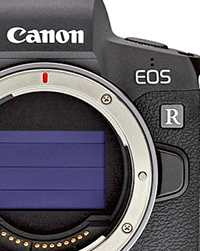
Ever since Canon launched their EOS R series of camera and lenses with the eponymous EOS R body back in September of 2018, speculation about the line has run rampant. Why did they introduce the series with what's obviously positioned as a mid-level model, while the initial lenses were all clearly higher-end designs? What's next? There must be a plan (right?), but what is it? What about a lens roadmap?
In short, where is Canon going with the whole EOS R platform?
I had a chance to have those and many other questions answered in an exclusive interview with Yoshiyuki Mizoguchi, Group Executive, ICB Products Group, Image Communication Business Operations at Canon Inc. Mizoguchi-san is the top product-planning executive within Canon, Inc. responsible for planning their camera offerings. As such, he's the person who'll know where Canon is and where they're going with the EOS R line, and what the reasons were for their initial body and lens offerings.
There's always a lot of speculation about new products and manufacturer strategies, but the amount of comment and rumor, not to mention the level of agitation around Canon's EOS R line is almost unprecedented in my long history in the industry. As such, many of my questions to Mizoguchi-san were quite pointed and direct. As you'll see, though, he rose to the challenge, and I feel we learned a lot by his answers, with some genuine revelations of Canon's strategy and even specific product plans.
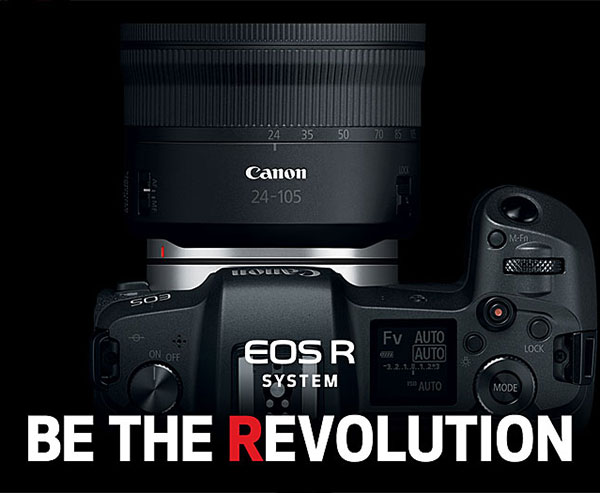
Given the language barrier on both ends, I provided copies of my questions in advance as I usually do, so they could be accurately translated into Japanese, and Mizoguchi-san's answers were prepared and carefully translated into English ahead of our meeting. With that as the basis, I asked followup questions in many areas, to explore new topics suggested by Mizoguchi-san's prepared answers, as well as to ensure that I understood his points fully. Several representatives of Canon USA were in the room as well; their comments or questions are labeled as such.
What's below is a fairly accurate -- but not 100% verbatim -- transcript of our discussion. I've edited some of the questions and answers slightly for grammar, clarity or brevity. (The latter for many of my questions; I tend to be just a little wordy when initially posing them. ;-). I've also paraphrased or just summarized some of the back and forth discussion in places, and added a good bit of commentary and analysis in between. (The latter is set in italics, to distinguish it from the real-time conversation.)
With that as background and without further ado, here's my conversation with Mizoguchi-san:
Dave Etchells/Imaging Resource: Canon’s launch slogan for the EOS R and RF series was “Revolution.” What does Canon believe they are doing that is revolutionary, and how is that a clear departure from what they have done in the past 10-15 years of digital photography?
<Additional comment, interjected in the live meeting> Apart from the different mount, the EOS R seems to mostly be a 5D Mark IV in a different package. The implications of the new mount and Canon firmly entering the full-frame mirrorless market are certainly noteworthy and far-reaching, but the EOS R itself seems more evolutionary than revolutionary.
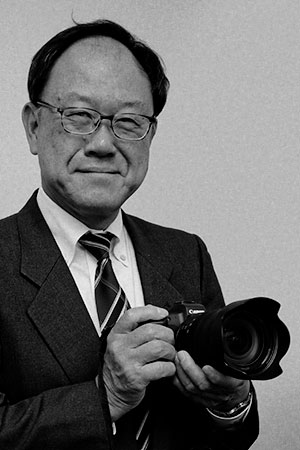
Group Executive, ICB Products Group
Image Communication Business Operations
Canon Inc.
Yoshiyuki Mizoguchi/Canon Inc: What we believe is “revolutionary” is the EOS R System as a system, not an individual product. We know it is very difficult for almost everyone to understand how capable each mount system is. However, it is true that how a mount system is designed will greatly impact what can be done in the future. When we introduced the EF mount back in 1987, our engineers took all the possibilities into consideration that they could think of and developed it. At that time, before the transition from film to digital, such a high resolution as 50 megapixels and high quality video capture with an SLR [were both unknown]; nobody could predict exactly what would happen in the future.
Now 31 years has passed since we introduced the EF mount, and we sometimes have encountered challenges in the current system when trying to introduce new technologies. That’s the reason we needed to develop the EOS R System, featuring the RF mount. We do not know what will happen in the next 30 years, but we considered many possible scenarios when designing the RF mount, to truly future-proof it as best we could. That’s why we are confident in this new system and believe it is “revolutionary”.
Our new RF mount features a large diameter, short back focus and enhanced data transmission. You have already seen some of the innovative outcomes in RF lenses, and of course there is more to come. Also, enhanced data transmission will greatly improve how the R-series cameras and lenses work together. It may take some time to realize all the possible benefits of this enhanced lens/camera communication, but we are excited and encouraged at the possibilities it can offer our customers.
[Ed. Note: I found the reference to "challenges" in implementing new technologies under the EF system interesting. Everyone has been talking about the advantages of new mounts going forward, but I think this is the first time I've heard a manufacturer specifically speak of challenges posed by their prior system, in implementing new features or technologies. The importance of improved data communications between the camera and lens is something I've heard repeated enough by both Canon and Nikon to now conclude that it's a very significant factor.]
DE: This next question is from one of our editors; I might have asked it a little differently, but I think you'll get the sense of what we're asking. With the EOS R being announced alongside three EF lens adapters, how much of an emphasis, from the business side of the equation, was placed on creating a product which was more of an extension of Canon’s existing digital camera systems, rather than a brand-new, from-scratch mirrorless camera system? Do you think that there are any negatives associated with encouraging users to adapt old lenses, and how do you convince photographers to buy new lenses if their old ones continue to work?
Canon USA: Are you asking could Canon have created an even more advanced system if they had not kept the compatibility with the EOS EF mount?

DE: That's a fair question. Thinking about it, I can't imagine it would have been in any way viable to announce a mirrorless system that wasn't compatible with previous lenses, so asking if the system could have been even more advanced without that constraint is pretty much moot. I think the question maybe comes down to a marketing question of the business impact of so much emphasis on adapting older lenses, rather than emphasizing the benefits of new lenses, and laying out a deep roadmap of where the R-mount lens line is going.
Canon Inc: It’s a bit too early to talk about business impact. We are working hard to properly explain all of the technological advantages that the RF mount offers, as well as the benefits of RF lenses.
There are two reasons why we also pushed for compatibility with EF and EF-S lenses. Firstly, it takes time to develop a sufficient number of [native] lenses to cover the diverse needs of our customers. So while Canon develops new RF-series lenses, customers will have the ability to use their EF and EF-S lenses.
Secondly, when we did research, we found that there was a significant amount of negative impressions toward using mount adapters compared to native lenses. When we made the decision on the RF mount, we really wanted to make sure our existing customers could enjoy the EOS R system, and thought that just ensuring compatibility with EF lenses is not enough. So beyond that, we worked to build in additional capabilities for customers when using EF and EF-S lenses on the EOS R, and that is what pushed us to develop three different mount adapters with various capabilities.
[Ed. Note: This was very interesting to me, as I'd never directly thought about how people think about mount adapters. It makes sense, though, given the extent to which people (myself included) tend to talk about "native" vs "non-native" lenses. See my notes a couple of answers down, for more thoughts about Canon's mount adapter strategy.]
DE: Canon continues to offer many capable and high-end DSLR cameras. Do you expect to continue with similar R&D expenditures on DSLR cameras and lenses in the immediate future, or will resources be shifted toward the EOS R system and future mirrorless cameras and lenses?
Canon Inc: It’s a bit too early to make that decision. While we have heard a lot of positive feedback on our EOS R System and wishes for its future, we saw very strong demand [for] DSLRs including 5D Mark IV, 6D Mark II, 80D and Rebel series during the holiday shopping season. Also, the EOS M50 has been very popular since its launch.
Canon offers a wider range of cameras and lenses over any other brand to meet various demands of our customers. Currently, we are simultaneously developing new products in the DSLR family, EOS R series and EOS M series. The most important thing for us is to carefully listen to what customers want and make decisions accordingly.
DE: As a follow-on to that, you're saying that at this time, you don't have a fixed plan of DSLR development, EOS R development, EOS M development, etc, but you're waiting to hear from customers where to focus?
Canon Inc: <After some side discussion in Japanese> Correct.
[Ed. Note: This isn't too surprising, but hearing it again from Canon underscores its importance in my mind. I've heard over and over again from multiple companies that their product development is much more driven by customer demands than it is by basic technology. While I'm sure Canon is working hard on a lot of underlying technology that could apply to both DSLR and mirrorless products, I'm equally sure that they're listening very carefully to the market, to decide where to place their bets for the next round of product development.
Of course, the typical development cycle for a camera is on the order of 18 months or thereabouts. So I'm sure that Mizoguchi-san knows exactly what their next round of product announcements will be, across the board. That said, though, I'm certain that how they choose to allocate their R&D resources right now is something that they're working out in real time, going forward. While the immediate next round of products is already in the pipeline, how they'll spend their development resources in the next 1-2 years is likely very much up in the air, and will depend heavily on what they hear from the market.]
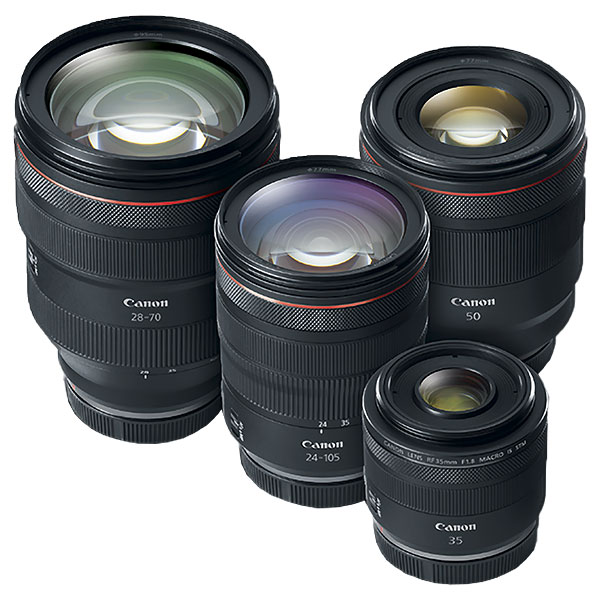
DE: What has the initial feedback been like for the Canon EOS R camera and the new lenses? Can you comment on initial sales figures and how they correspond to internal expectations?
Canon Inc: The sales performance of EOS R camera and RF lenses is almost in line with our original expectation. We have gotten a huge amount of positive feedback on the RF lenses. Everyone who has tried the RF 50mm F1.2 has loved it. With the RF 24-105mm F4, although the focal range and f-stop are equivalent to its EF lens counterpart, many customers were surprised at its image quality improvements as well as how quick and silent its auto focus is thanks to Nano USM.
Now that both the RF 35mm F1.8 and RF 28-70mm F2 are available in the market, we are looking forward to hearing customer reactions after they get to try them.
The customer reactions to the three different RF mount adapters has been VERY positive. As I mentioned just previously, when we discussed internally how we could make this system valuable for our existing EF lens owners, we felt it should be more than just ensuring compatibility and we spent a lot of time coming up with ideas for mount adapters (including some that were interesting and unrealistic but we made sure to explore all options).
At the same time, we recognized that many customers had a bad impression toward mount adapters, citing reductions in performance such as slower auto focus speed.
But that is simply not true with Canon mount adapters and lenses on our cameras. When we actually showed customers that not only was the EF lens performance not hindered by our adapters, but in fact, enhanced by the Drop-in filter mount adapter and Control Ring mount adapter, they were very pleased.
Initial online feedback on the EOS R camera itself has been generally positive for its price point, and positive about specific features like its autofocus, viewfinder, vari-angle LCD, EF and EF-S lens compatibility and ergonomics. But the feedback has been even more positive after customers were able to actually try it. The response about its autofocus has been very positive, for its speed and performance in low-light situations. Previously in low-light situations, a customer could see the subject through the EVF better than with an OVF, but the challenge was that the camera could not focus very well. We worked hard to solve this pain point, so we are very glad to see customers happy with the results.
And of course, we are aware of customers asking for higher end R-series models and better specs such as faster continuous shooting speed, in-body image stabilization, better video capability and dual card slots.
[Ed. Note: Interesting. Mizoguchi-san acknowledged the interest in a higher-end R-series model before it came up directly in my questions. No surprise there, though; it's certainly been a topic of discussion on internet forums, and in the market generally.
This also seems to be the place to talk about Canon's mount adapter strategy. As I noted above, I hadn't really thought much about photographers' perceptions of mount adapters before this, but when I did, I quickly identified with the generally negative impression that Mizoguchi-san talked about. Given that, it was interesting to me the extent to which Canon's strategy with the adapters had worked on my own thinking. We haven't done any kind of testing yet on how well lenses focus with the EOS R vs Canon's existing DSLRs, but I haven't had any reason to doubt their claims that existing EF-mount lenses focus as quickly when mounted on the EOS R via an adapter as they do on any of Canon's existing DSLRs. (The open question in my mind has more to do with how the EOS R's AF system itself performs against those in various current Canon EOS DSLR models.)
But the idea that a "mount adapter" can do more than just be a mechanical and electrical bridge between the lens and camera is something that I immediately found appealing. Being able to add a programmable-function control ring to the base of all existing EF-mount lenses through the lens adapter is brilliant. You have the physical space there to work with, why not use it for something practical, versus it just being dead space?
Likewise, while I don't personally use ND filters very often, at least part of that is because carrying a range of different-size filters (or a few large sizes and an assortment of filter-thread adapters) is a lot of hassle. With Canon's ND filter-equipped mount adapter, suddenly a single ND filter can work with all the EF lenses in my bag. That's a huge convenience, and one that'll be especially appealing to video shooters.
So I applaud Canon for deciding that mount adapters can be more than just dead weight/volume in your kit. I have no idea what their sales stats are for the three adapter types, but would be willing to bet that they're selling a lot of both the control-dial and ND filter versions. Kudos to them, this is a genuinely useful rethinking of what a mount adapter can be.]
DE: For this next question, we weren't quite sure how to phrase it, but it occurs to us that photography went through a huge transition, going from film to digital, but it took a number of years. But now, it feels like the transition from SLR to mirrorless is happening much faster. So I wonder if there are any lessons you learned in the 1990s to 2000s from the film to digital transition that can be applied to the current stage of camera development?
CUSA: Are you talking advancement in tech or adoption parallels? For example, a customer in the 90's may have had a film SLR and a digital SLR, but only used the digital for lesser or more personal photography versus the film for actual jobs. Today, the customer may have a 5D IV and an EOS M50 in much the same way- Now that the R and FF are getting more advanced, the customer may feel more empowered to use the mirrorless instead of DSLR?
DE: I think the direction of this question is more in terms of the sea change that's happening in the market, how Canon handles it strategically, and what the implications are for ongoing business.
The transition from film to digital happened over a much longer period of time, but was similar in that one form of camera basically went away and another replaced it. Currently, it seems that the capabilities of mirrorless cameras have caught up to those of DSLRs over a much shorter period of time, and DSLR sales are in sharp decline as a category, ceding ground to advanced mirrorless systems. Canon has previously relegated mirrorless to more consumer-oriented products and use cases, while others have been pushing hard to advance mirrorless tech to meet pro-level needs and applications. What's Canon's strategy for catching up to what we're seeing in terms of the most advanced mirrorless solutions from other players?
It's not quite like the shift from film to digital, but we have a sense of the camera market now being poised for a pretty rapid transition to mirrorless, so we're wondering about Canon's strategy for dealing with that. (Or if Canon disagrees that the transition will be rapid, we'd be happy to hear and pass along that argument: We could well be wrong, and DSLRs might have many years of viability left :-)
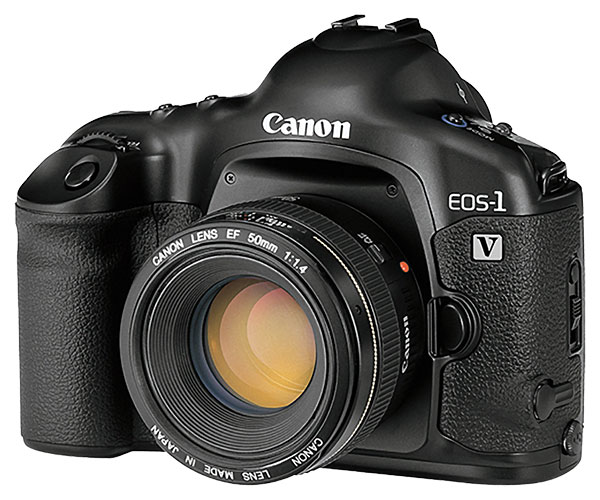
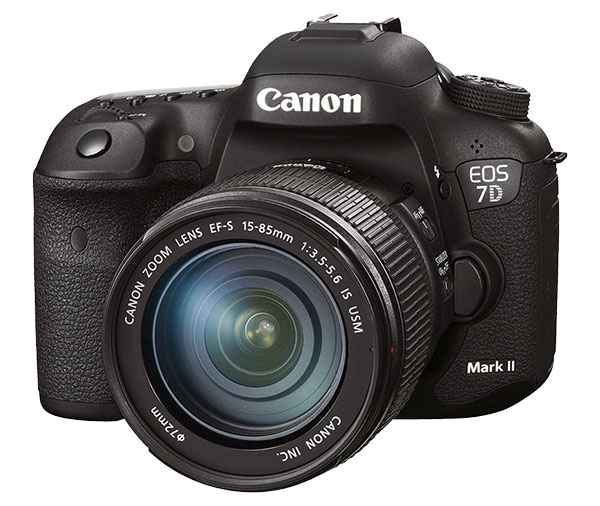
Canon Inc: Currently, the mirrorless ratio out of the total interchangeable camera market in the US is roughly 30-35%, and that ratio has been increasing several percentage points each year. Since multiple companies including Canon have announced full-frame mirrorless camera systems this year, we believe that the ratio will continue to increase next year as well.
We developed the EOS R System for the next 30 years, and started by introducing higher-end RF lenses. Yes, we are very serious about mirrorless. But please do not get the wrong impression, we will continue to enhance DSLR technology and products as well. We will work hard on both DSLR and mirrorless technologies and will wait to hear what customers say about each. Regarding the EOS R series, we are considering multiple models including a pro-level model, although I cannot comment on the time frame at this point.
[Ed. Note: See my remarks at the end, but this is the key to why Canon chose to release the particular RF-mount lenses that they did as part of the initial EOS R system rollout. Their first body offering was decidedly middle-of-the-road, but they wanted to telegraph strongly that they intended the system to compete at the highest professional levels. They did this by announcing very high-spec lenses, as an indication of where the line will be going in the future. And they haven't at all forgotten about the need for more conventional, mainstream lenses in the process; see Mizoguchi's answer to my next question.
Particularly interesting is Mizoguchi-san's mention of a coming pro-level model. In the back-and-forth, I asked him specifically if "pro-level" meant AF performance at the level of a 1D X Mark II, and he replied that that is what they mean by "pro-level": no-excuses levels of performance.
<very long sidebar discussion in Japanese>
Canon Inc: Thinking about the transition from film to digital, at that time, the basic design or construction of the cameras, the film SLRs and digital SLRs was basically the same, it was just a matter of having either the film or a digital sensor inside. Now, the transition from DSLR to mirrorless is completely different. The form factor is different; removing the mirror box affects many things. So that's the basic difference. So when it comes back to the film to digital, because of the higher resolution or the improvement in sensitivity, because that technology had evolved, the digital had clear benefits over film.
But now, when it comes to digital SLRs and mirrorless, of course the technologies will evolve, and the mirrorless cameras will be getting better and better, and the overall performance could be better than the DSLRs some time later. But when it comes to specific points, like the optical viewfinder, and actually seeing the images in real time, while mirrorless is using sensor-based viewing, through the EVF, that type of specific difference based on the structural difference, we don't know yet if mirrorless can achieve better performance over the DSLR; that we don't know yet.
But generally speaking, the mirrorless technology will keep getting better and better. So we will continue to develop both better DSLR technologies and mirrorless technologies, and we'll see what happens in the future. So that's how we currently see the difference between the past transition and the present.
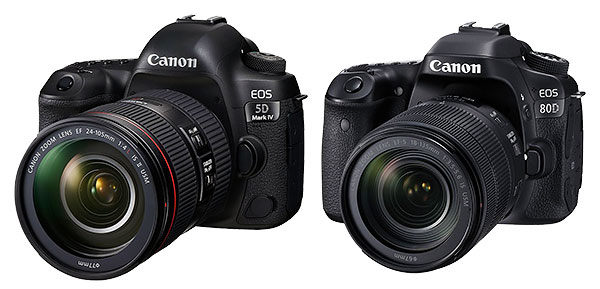
DE: So with film vs. digital, there was fairly quickly an advantage to digital. (I mean, it still took years, but yeah, there were clear advantages with digital fairly early on.) But now with mirrorless, there are some areas where DSLRs are still better, in terms of absolutely zero lag in the viewfinder, and you don't know yet how mirrorless will evolve.
So I guess the point, in terms of the answer to my question, is that I was viewing it as something that was happening very quickly, but in actuality there are some aspects of DSLRs that will continue to be an advantage over mirrorless for some time. Hai... [Hai is Japanese for "yes"; I often find myself saying it even when I'm interviewing non-Japanese execs.] :-)
DE: With such a strong library of existing EF lenses that you can simply adapt to the EOS R and presumably all Canon full-frame mirrorless cameras in the short term, will the focus be on creating new and unique lenses, such as the 28-70mm f/2, or releasing enhanced and improved versions of existing optics, such as the new RF 24-105mm?
Canon Inc: The answer is we will do BOTH. For example, among the EF lens lineup, F2.8 L series zoom lenses are the best-selling models to pros and advanced amateurs. We would like to offer F2.8 L-series zoom lenses in the RF lens lineup as well, with improvements we could not have achieved with the EF mount. These are already under development, so please look forward to hearing from us soon. Also, we are working on new concept RF lenses which have never been seen in the market. All of these lenses will take advantage of design flexibility provided by the RF mount.
DE: Ah, that's very significant news, that the f/2.8 zooms will come soon, as enhanced versions based on the RF mount.
[Ed. Note: Wow, as far as I know, this is the first time Canon's revealed any specifics about their RF-mount lens roadmap. From the in-person discussion following this question, it seemed clear that conventional mainstream f/2.8 zoom lenses will be coming very soon. It sounded like they'll be the next lenses that Canon announces, but of course Mizoguchi-san declined to be more specific. So we should expect to see 24-70mm and 70-200mm f/2.8 zoom lenses coming to the RF mount in the very near future. We're eager to get these lenses into our lab and into the hands of our reviewers, to see just what those "improvements we could not have achieved with the EF mount" will amount to. I'm guessing that we'll see improved optical quality, particularly in the form of corner to corner sharpness and lower distortion/aberrations when shooting wide open. Beyond that, who knows, but I'm sure that part of the improved communication between the lens and body that's part of the EOS R system will also include more powerful firmware/software-based correction for lens aberrations than we've seen previously with the EF mount.]
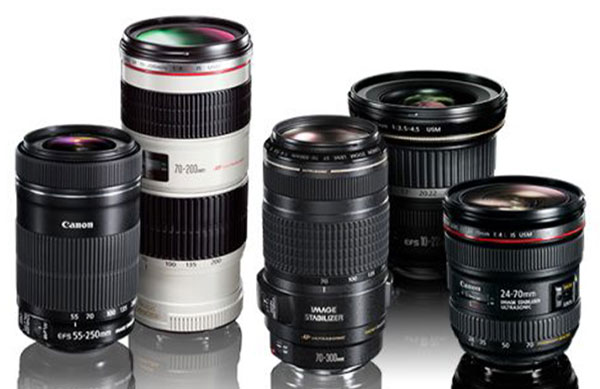
DE: So coming back to the point about higher-end models coming, it seems like your focus with lenses has been on very high-end pieces, whereas the body is more middle-level. It seems like the direction of lens development is going one way, and body development is going somewhat the other. [Ed Note: See the revelation below that the next EOS R model will be an entry-level one, not a high-end model.] I don't know how to tell you to do it, but I think that somehow, it's going to be important for our readers and the market in general to have a sense that... perhaps it can't be called a priority, but at least an extremely strong intent or something to come out with high-end models. I know you're limited in what you can disclose publicly at this point, but is there anything more you can say about your intentions for the high end that would help communicate that commitment to our readers and the general public?
Canon Inc: So basically, some of the kind of intentions we have will be shown in some of the following questions. So after that, if you want to discuss a little bit more, of course, we can do so.
DE: So the next question is about video, and it's somewhat wordy, as many of them are. <laughter> But the short question is just the end of it as you see it written there. How do you see video fitting in with the EOS R series, both the lenses and the cameras? How important will the video workflow be in that product line in general?
Canon Inc: Video will play a huge role in the EOS R System for sure. For example, an 8K video capable camera is already in our EOS R-series roadmap. And we are not just looking at video from a camera perspective, we are also working on how to make RF lenses better for video capture as well. For example, the RF 24-105mm F4L was the first L-series lens with Nano USM technology, which contributes to silent and smooth autofocus while shooting video. We are looking to further extend the Nano USM-equipped RF lens lineup. Paired with Dual Pixel CMOS AF, a wide range of Nano USM equipped RF lenses will promise video creators great image quality as well as impressive autofocus together in the R-series.

DE: I want to make sure I caught that: You said there will be many RF lenses with Nano USM?
Canon Inc: Yes.
DE: That's very interesting that you say that 8K video is already on your roadmap. Can you give any indication, does "on the roadmap" mean 2025, or 2019? <laughter>
Canon Inc: Sorry. <more laughter>
DE: Yeah, British Columbia is on my map, but not exactly close... <more laughter>
[Ed. Note: Wow, an 8K video-capable camera is on the EOS R roadmap? That sounds pretty significant. As I pointed out, though "on the roadmap" could mean 2025 as easily as 2019. Given Canon's generally cautious nature when it comes to talking about coming tech, the fact that Mizoguchi-san chose to mention it at all suggests to me that it's going to be a more near-term sort of thing.
The mention of Nano USM is also important. Sony's been making the point for a while now that their linear-actuator AF-motor technology gives them an advantage over the competition. They do currently have more lenses deployed with their most advanced technology of that type than either Canon or Nikon (yet another article that I desperately want to find time to write), but Mizoguchi-san is pointing out here that Canon also has highly-performant AF-actuation technology at their disposal, which we'll be seeing much more of in forthcoming products. (In particular, I expect that we'll see Nano USM in the f/2.8 zooms I mentioned earlier.)]
DE: Another long question, I'll try to condense it a little bit. This is from one of our editors who is a videographer; he has a 1D X Mark II, a 5D Mark IV, etc. (By the way, he liked the EOS R very much. The video characteristics and color grading matched the 5D IV so perfectly, that he could mix the footage and not have to worry about any differences in appearance.) He and many other people in the camera space feel that Canon doesn’t push the limits of video-making on their DSLRs and now mirrorless because Canon does not want to lose sales for its cinema line. Is this true? With Sony including S-Log profiles in just about every camera they make as well as true full-frame video capture on the part of both Sony and Nikon, will Canon be making video a more central feature of their R cameras in the future? I guess one way of rephrasing this is will we be seeing things like log capability built-in and available from the beginning?
Canon Inc: This is simply not true; we do not place any limitations on video features for fear of losing Cinema EOS sales. We are keenly aware of what customers are asking for, such as 4K without crop factor, faster frame rate, in-body image stabilization (IBIS) and an extended product lineup with Canon Log. While I cannot specify a timeline at this point, these are all features we are aware of and are working on.
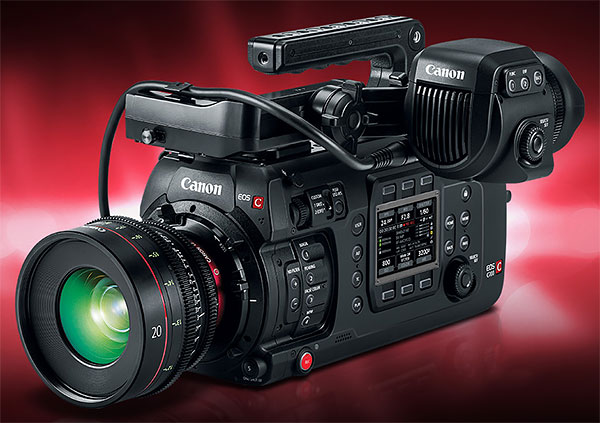
It turns out that the split between the video features of their still cameras and the Cinema EOS line comes down to basic issues of technology. They weren't able to simultaneously deliver the kind of video performance demanded by professional videographers (as embodied in their Cinema EOS bodies) and top-notch still imaging capabilities (as found in their still-image EOS lineup) within the same platform.
It sounds like we'll see a lot more advanced video features coming to the EOS R lineup in the months and years to come.
DE: So the video features that are in Cinema EOS but not in Canon still cameras, the reason they're not in the still cameras is ... you said very clearly it's not because you're trying to protect Cinema EOS sales, but rather due to technical limitations of the platform otherwise? I guess Cinema EOS is in fact a very different form factor. Is that a reason why you can't bring those features to still cameras?
Canon Inc: Basically the difference comes from the fact that both the digital SLR and mirrorless cameras need to be designed to do both video and still capture at the same time. So we designed all the systems, the processor, the sensor, etc, to accomplish both of those together. So that's what's really really different about those devices versus Cinema EOS. That's actually a huge difference.
DE: Ah, that's good that we brought that point out. That's been a common perception, but this explains very logically why things are that way.
[Ed. Note: Now this was a revelation, at least to me personally, and I'm really glad we framed the question in such a pointed manner. Honestly, I'd always felt that Canon was holding back on video features in their SLRs, because they didn't want to steal sales away from their Cinema EOS line. I pressed Mizoguchi-san a bit on this after he'd given the answer above, and he said that the Cinema EOS cameras and their DSLRs had very different sets of parameters they each had to meet. Their DSLRs had to meet the needs of both still and video capture, while their Cinema EOS models could be optimized for video capture alone. He was very emphatic that this was the reason why certain video features and capabilities were available in their Cinema EOS cameras but not their DSLRs.
As I thought more about it, this made sense. Sure, Canon would want more of its users to buy into the pricey Cinema EOS lineup versus their less-expensive DSLRs, but at the same time, they wouldn't want their own DSLRs to be disadvantaged relative to ILCs from other manufacturers.
Just looking at the respective bodies, the Cinema EOS line are very different beasts than Canon's DSLRs.
The Cinema EOS bodies have a form factor and mechanical UI that's more suited to video shooting, but that form factor also provides more mass and surface area with which to dissipate heat from the sensor and processor circuitry than the conventional DSLR body style does. Likewise, a pure video camera doesn't need the buffer memory or data paths to support high-speed JPEG conversion, and the data path to convey JPEG and raw data to the memory card.
I don't pretend to understand the detailed engineering tradeoffs involved, but it immediately made sense to me that such tradeoffs exist, and explained a lot for me about why there's been such a disparity between Canon's Cinema EOS line and their DSLRs.
As profitable as I'm sure the Cinema EOS line is, I strongly suspect that the volume sales from equally video-capable but lower-cost DSLR or mirrorless bodies would deliver greater profits overall. For the first time, I felt that I understand what's been behind the dichotomy between Canon's Cinema EOS and DSLR lineups, in a way that makes business sense to me. As we see Canon's sensor and processor technology evolve, I fully expect that we'll see much richer video capabilities appear in future EOS R series models. [But not the next model, see below.] ;-)
DE: Another question from the same editor: Can you address this popular sentiment? - “Canon did not want mirrorless, they felt compelled to make mirrorless due to outside pressure.” Speaking for myself, there's a bit of a perception that Canon was dragged into mirrorless... <laughter>
Canon Inc: Our feelings toward any product is easily defined, we always look to offer the best possible imaging products to meet our customer needs and it does not matter to us if it is a DSLR or mirrorless camera. We always take customer feedback into consideration as well as available technologies. If we believe mirrorless is the best format to meet these needs then we will do it, it is that simple.
DE: This is generally a question about your overall market strategy. You know, as the market has been changing, DSLR market share has been reducing, and Canon is very dominant in that part of the market. So the question is really not only what are your strategies for maintaining your current share, but also expanding it in the face of all the competitive pressure you're feeling now. I think really, you face more competition now than you ever have historically. So what is your strategy, and where does the EOS R fit into that?
Canon Inc: Market share is not our goal but is a result of how well we satisfy customer needs and our product performance. We saw more and more customers asking for full-frame mirrorless cameras, and we responded by introducing the EOS R System. And now, we are aware of customer demand for an extended lineup of EOS R cameras and we will look to satisfy that request.
On the other hand, as I explained before, looking at the US market, approximately 65-70% of the market is still digital SLRs. Focusing just on mirrorless would not be the right answer at this point. Either DSLR or mirrorless? No, both are important and we must satisfy both.
To us market size is much more important than market share. We have seen an explosive increase in the number of customers enjoying photos and videos thanks to smartphones and social networking services. With the evolution of network technologies, communication has shifted from verbal and text to more visually-centric. Today, everyone is a storyteller. Many people, especially the younger generation feel visual expression and creativity are important to delivering their message. We would like to provide the right tools for them, and encourage them to continue their storytelling through high quality photos and videos.
DE: Hmm, that's an interesting point and a good one to make to our readers, that 65-70% of the US market is still DSLRs, so you can't just say "well, forget DSLRs, we're going to do something new." (Honestly, I myself hadn't considered that; I've been more aware of how much the mirrorless market has grown, but less so of the remaining size of the DSLR market.) I think there is concern about how quickly you can come fully up to speed with mirrorless, but I do think that point that 70% of the market is still SLRs is an important one.
[Ed. Note: Hmm, a good point: All the buzz and excitement recently is about mirrorless, particularly full-frame mirrorless, but meanwhile 65-70% of all the interchangeable-lens cameras sold in the US are still DSLRs. That's changing, and as Mizoguchi-san noted elsewhere, will be changing more rapidly, now that both Canon and Nikon have announced their full-frame mirrorless systems. But even as that's happening, there's still a long tail to the older DSLR technology in the market.
Even if everyone's FF mirrorless systems are successful beyond their wildest dreams, there's still going to be a very big DSLR business for some years to come. Just how many years is anyone's guess, but it's a valid point that there's still a ton of business there, and any company who ignores it does so at their peril.
The story about market size vs market share is one that I've heard before, from essentially everyone in the business. Even Sony reacts to the notion that they're just stealing market share from Canon and Nikon, saying that their primary mission is to grow the market as a whole.
Personally, I think this argument is both true and overblown at the same time. Sure, there's many billions more photos being taken every day/week/month/year than ever before, and the growth of video imagery has been even more pronounced. But at the same time, you have to really want to make better photos/videos, to be motivated to move beyond the sheer convenience of a smartphone.
It's absolutely happening; I'm sure that more people are becoming serious about image and video quality than ever before. But I wonder: A) How do the numbers of new aficionados compare to people already identified as "enthusiasts" of whatever stripe? and B) How many people shooting photos and videos with their cell phones are motivated enough to actually take the step of moving to a separate image/video capture device?
This may sound like an argument against IR's own business, but it isn't really. Our audience is people who are serious enough about buying a camera or lens to take the time to research it, which naturally includes many people who are stepping up from phones or lower-level cameras as described. What I don't see happening is huge masses of people stepping up to enthusiast- or pro-level gear to make YouTube videos like their heroes there. I'm sure many do, but wonder how large those numbers are, compared to people who are in the "enthusiast" category already.
This is an area where I'd love to hear some feedback and discussion from our readers: Are you one of those people? Or do you know others who are? I'd love to hear your opinions...]
DE: This is relative to the EOS R; it can at times feel very much like a continuation of Canon’s current DSLRs rather than a brand-new system. Well, you can read the question that's written there. <chuckling> I guess the biggest part of the question is were there any concerns that your first step to full-frame mirrorless was not as large a step as you could have made?
Canon Inc: EOS cameras have continued to evolve over the last 31 years, within the original brand concept of "Fast - Comfortable - High image quality". In pursuit of providing the best possible image capturing devices, our fundamental philosophy should not change whether it is a digital SLR or a mirrorless product.
Because we really think the fundamental philosophy is important, we don't change that philosophy. You may feel that it is very consistent, it may look like what you have seen in the past in digital SLR systems. But because of the importance of the fundamental philosophy, this is also our strategy for this system.
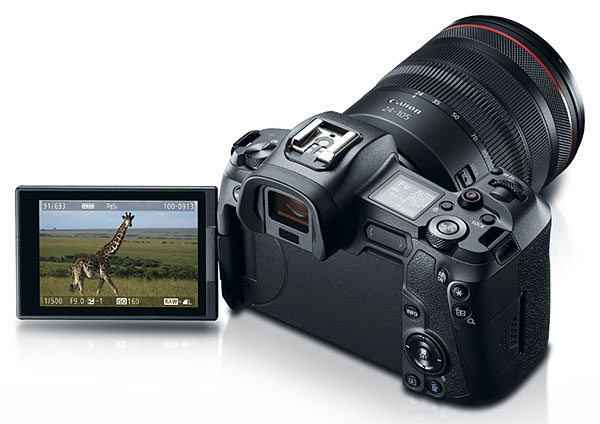
Even though you may feel that it currently looks like the existing system, because of the new mount system, which features the large diameter, short back-focus and enhanced data communications, in the future, what you'll see because of this fundamental improvement in the system, you will see the great improvement and different things in the future.
However, there are very clear differences between DSLR and mirrorless in terms of physical aspects such as the electronic viewfinder vs. an optical viewfinder, autofocus system on the image sensor as well as the generally smaller space to lay out buttons and dials in exchange for compactness and light weight. And that kind of difference, actually, those differences already mean that you'll see as the real difference in the features or the ergonomics of the EOS R system.
Taking those into consideration, we changed and designed the best possible imaging device and sought to add functionality and control where it fit best in the customer’s hand such as a control ring on RF Lenses. The combination of years of imaging experience and innovation along with new technologies and trends is what the EOS R System stands for.
[Ed Note: A bit of a sidestep, but not an unexpected one. A manufacturer (at least any manufacturer I've ever met) would never reply to a question like this by saying "Yeah, we really undershot and wish we could have done more." Reading between the lines here, this answer essentially says "we did as much as we could", while underscoring Canon's long experience building cameras that photographers love using - a not inconsiderable point in their favor. Stay tuned, though, we do get into Canon's more specific plans for how the line will evolve a bit further below; it's interesting!] ;-)
DE: I'm trying to think of a question, I'm trying to think how best to ask this... I have some sense that the EOS R's feature set is a function of where your sensor technology is today. I have a sense that the sensor technology for mirrorless is limiting the EOS R feature set some, and that sensor development is a very slow process. Again, I guess I'm coming back to the question that you couldn't answer before, about timing. But it's very large in my mind, what you can do to give some assurance to people that, you know, we will have this technology, it's coming, and not in 2025. I think there's some sense when the EOS R came out that "Oh, that's all?", that people were expecting a step up, relative to what had been. So I guess what it is, is that I'm not convinced, or I don't have what I need to tell readers to be convinced that Canon is really... will be current with the technology, that it will come up to par, basically. Can you address that?
Canon Inc: So we understand what you're talking about. We can't comment on the specific timeline, but it is not something like 2025.
DE: So is 2020 too far? [pushing them, even though I'm pretty sure they won't go for it.] ;-)
Canon Inc: <laughter all around, at my pressing for more specificity> [but no answer]
DE: Ahh... Yeah, I understand that you can't speak specifically about the future. I just wish...
Canon USA: "You'll just have to wait to see what the future holds" [Said jokingly, knowing that it's a totally stock PR phrase.] :-)
DE: This is also relative to the feature set, I guess, similar to the above that we just talked about: The EOS R feels like a natural addition for a Canon shooter to add to their bag, but you know, some users have already jumped ship to a different system. What is your strategy for winning those customers back, and how do you convince non-Canon users that the EOS R and future Canon mirrorless cameras and lenses will really offer them something that no other system can?
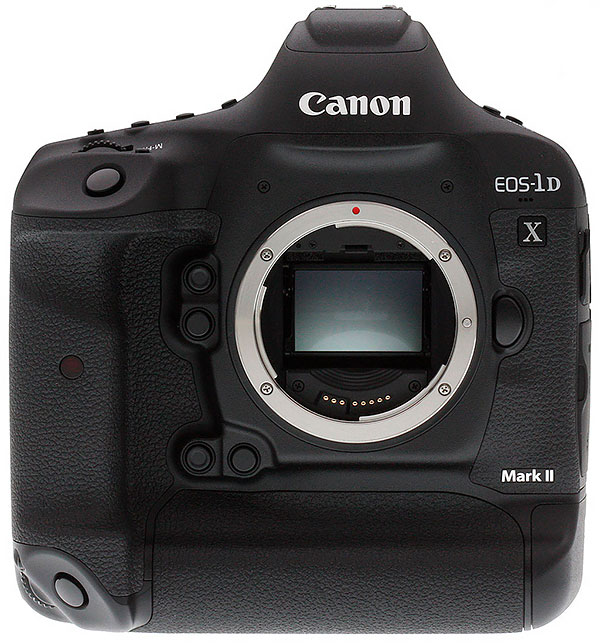
Canon Inc: The most important thing is how attractive and reliable of a SYSTEM we can build including cameras, lenses and accessories for a wide range of customers who require different levels and types of imaging devices. We are fully aware that customers would like to see more innovative camera products from Canon. It might take some time but we promise we are working on that as well.
In addition, we are developing not just high end lenses such as the RF28-70mm F2 but also very ambitious-concept lenses for amateur customers as well, but I am unable to share more details today.
[Ed. Note: Another not-unexpected response, but I think it's an important one in the marketplace, that you look at Canon's huge ecosystem as a whole. The fact that the EOS R works very well with existing EF-mount lenses (even adding capabilities and UI enhancements via the mount adapters) is a big deal for anyone looking for a system to settle on. While there will clearly be a lot of advanced and unusual lenses like the 28-70mm f/2 coming in the future, just the enormous number and wide availability of EF-mount lenses in the market is a strong point in Canon's favor.
I'm not talking just about NIB (new in-box) lenses here, but rather the vast numbers of EF-mount lenses available on the used market, for very affordable prices. For new users especially (perhaps some of those "step-up" consumers we talked about above), the ability to purchase a wide collection of good-quality used lenses at very affordable prices is a strong argument in favor of the Canon platform. Canon produced its 130-millionth EF-mount lens more than a year ago, in October of 2017. You can also find tons of on-camera strobes of varying vintage and capabilities on eBay and Craig's list. So it's an understatement to say that there's a huge system available to you when you step onto the Canon platform, and for new arrivals, you can access a lot of it very affordably.
Likewise, as we've also discussed here, and as they called attention to by referring to the 28-70mm f/2 lens, Canon has signalled very strongly via their RF-mount lens offerings that they're going to be pushing the envelope optically, taking advantage of the new, larger mount with its much shorter back-focus distance.
So for someone coming into more serious photography/videography, buying an EOS R could make a lot of sense, as long as its capabilities meet your current needs. You'll immediately have access to a huge library of lenses, strobes and other accessories, while being positioned to take advantage of more advanced optics coming in the future. If you've partially jumped ship by buying into a competing mirrorless system, the excellent new optics already available (and particularly as an indication of what to expect in the future) may give you reassurance that Canon's in fact going to be able to meet your needs going forward, and convince you to at least pause your switchover, and perhaps come back entirely.
So Mizoguchi-san's answer here is an expected one, but that doesn't mean it's without merit!] ;-)
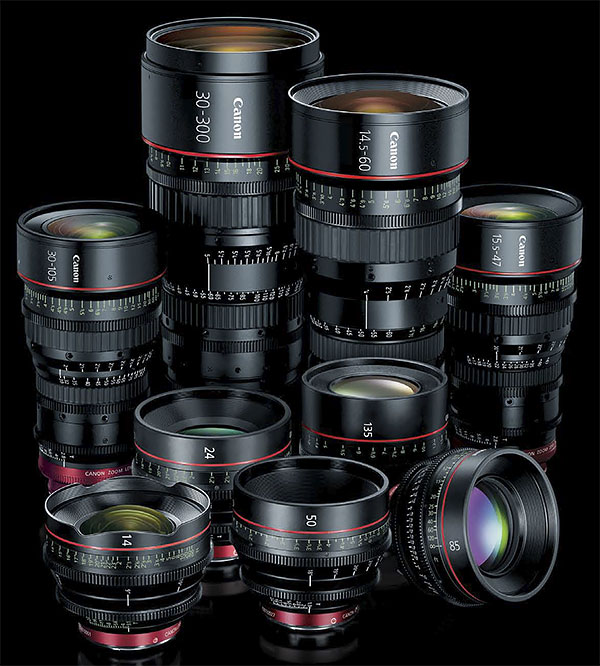
DE: It sounds like there's a tremendous amount of development going around this whole system now, with entirely new-concept lenses and things, but you can't talk about that. Is there anything you can say about the level of R&D development or resources being applied to EOS still cameras now, compared to a couple of years ago? Where I'm going with this is that the Cinema EOS line was a very big project that I think took a lot of resources to develop. But now that line is pretty mature; you have all the lenses for it, and you have a full range of bodies. Based on that, I would think that there is more R&D budget available for other things now, so there can be more resources coming back to the EOS still cameras like the EOS R series. Is that the case?
Canon Inc: As we discussed earlier, we would like to meet various demands of our customers [that is, a wide range of end-user requirements]. Currently, we have just one camera in the R series, and need to extend and strengthen that lineup. In order to do that, we need to focus on the EOS R system for the time being. But, as we explained, we are simultaneously developing new products in the DSLR family, EOS R series and EOS M series, and the most important thing for us is to carefully listen to what customers want and make decisions accordingly.
[Ed. Note: This wasn't a direct answer to the central point of my question, but then I honestly didn't expect one. :-) I do think that my theory about allocation of R&D resources is correct (and Canon has also made very significant R&D investments in medical imaging over the last 10 year or so as well), but this isn't at all something that I'd expect a camera company executive to comment on in detail. I mainly asked the question to read it into the record of this interview, so I could share it with our readers ;-)
Mizoguchi-san was very consistent in claiming that Canon will continue to invest in all of their camera lines, including their DSLRs and both of their mirrorless systems, and will be watching the market carefully, for guidance on how to allocate resources between them.
That said, his reply here makes it clear that the EOS R line is going to get a lot of attention in the next period , as they build it out in the coming months and years.
Personally, I do think that we're going to see a lot more development effort and innovation in their still-camera lineup, particularly the EOS R system, over the next few years than we've seen for some time now. Only time will tell, but check me on this; let's see where Canon is at 12 months from now.] :-)
DE: This next question may need a little rephrasing, so I'll adjust a little. Your most recent in-house innovations have been the Dual Pixel RAW images, where you can adjust focus slightly after exposure, and the touchbar on the EOS R, as a new user interface element. The question is do you see those as being enough to hold the interest of the Canon faithful, and more importantly, do you think they're making a sufficient impression on other users, or people who have already left the platform?

Canon Inc: I guess this would depend on the individual person and what they feel is innovative, but Dual Pixel CMOS AF is a fully developed in-house innovation and it has been continuing to evolve with the latest DIGIC processor, offering the fastest autofocus speed in the world among full-frame mirrorless cameras, and providing EV-6 low-light autofocus as well as F11 compatibility when F5.6 lens used with a 2x converter. All of these new achievements are found in the EOS R.
Now with the introduction of the EOS R system, we have both DSLR and mirrorless platforms under the EOS product line. We will continue to enhance technologies for both platforms.
With respect to “holding the interest of the Canon faithful”, we really cannot say. Instead, we will let the market share numbers (from those agencies that track them), speak to that.
[Ed. Note: A smart reply. The Dual Pixel RAW feature referred to in the question is a very unique, but I suspect marginally-useful feature for most photographers. By saving all the phase information from the dual-pixel array, you can then use Canon's DPP software to slightly shift the focus in post-processing, after the image is already captured. In practice, the amount of adjustment is quite small, but it can be useful if the catchlight in your model's eye is just slightly out of focus.
But Dual Pixel CMOS AF is a genuine Canon advantage relative to their competitors. Because every pixel is technically an AF pixel, that also means that you don't lose image information from the pixels you're using to focus with. So Dual Pixel sensors aren't subject to the kinds of image artifacts you can sometimes see with other technologies. (Conventional on-sensor phase-detect systems have to try to fill-in the missing image information from pixels used for focusing, and that process can fail if there's too much local contrast in the image. The result is bands or "stitch" artifacts in the image.)
My sense in the past has been that Dual Pixel AF was a bit slower than some of the competition, but that's ultimately down to how fast the camera can read out and process the phase data. It seems that the new DIGIC processor in the EOS R has addressed that issue. In our view, the official CIPA spec for how you measure AF speed doesn't translate too directly to actual real-world use cases, but it's at least one objective measure of how fast cameras can complete AF cycles, so it's a significant claim for Canon to say that the EOS R's AF is the fastest of any full-frame mirrorless camera on the market.
Beyond that, a low-light AF limit of -6 EV is pretty amazing; it's so low that the most sensitive light meter in our lab is only just able to produce meaningful readings at that level. (For reference that's just 0.04 lux. By comparison, moderate city street lighting at night is about ~10 lux. So EV -6 is 250x darker than a side street or street in a small town at night. As another example -6 EV corresponds to the light from a quarter-moon. Suffice to say it's really dark.
Then there's video AF, and Canon's Dual Pixel CMOS AF technology has long been a leader when it comes to providing smooth, accurate tracking during video recording.
So it makes sense that Mizoguchi-san underscored Canon's AF technology when talking about what's unique to Canon.]
DE: A question from one of our editors: Canon's competitors state that the benefits of the mirrorless format extend beyond just removing the mirror, citing faster focusing, quieter lenses as well as improved frames per second and truly silent shooting with no drawbacks. Given Canon's first line of RF glass and the limits of the EOS R, it seems Canon disagrees with this. So with that as a preface, what is Canon's philosophy on mirrorless? Does it extend beyond just making a smaller camera? How does Canon respond to competitors who cite changes to camera philosophy that Canon has not presently embraced?
<back to the live conversation>
You can read the question from our editor, but I think the key thing he's getting at is something that we've already discussed somewhat, and that's whether you should change your camera philosophy to accommodate mirrorless technology?
Canon Inc: Yes, and no. Firstly, let me touch on what is really different between DSLR and mirrorless. If you use a digital SLR camera with its mirror up and in live view mode, it basically works the same as a mirrorless camera except for the fact you cannot use the EVF. So, if we purely talk about technologies, the same level of autofocus speed, continuous shooting speed, and a silent shutter can all be achieved in both DSLR and mirrorless cameras. So, what is the benefit of mirrorless?
We believe the biggest one is short back focus (due to the loss of the mirror box). Innovative RF lenses such as RF28-70mm F2L can be achieved because of short back focus paired with a large inner diameter of the RF mount.
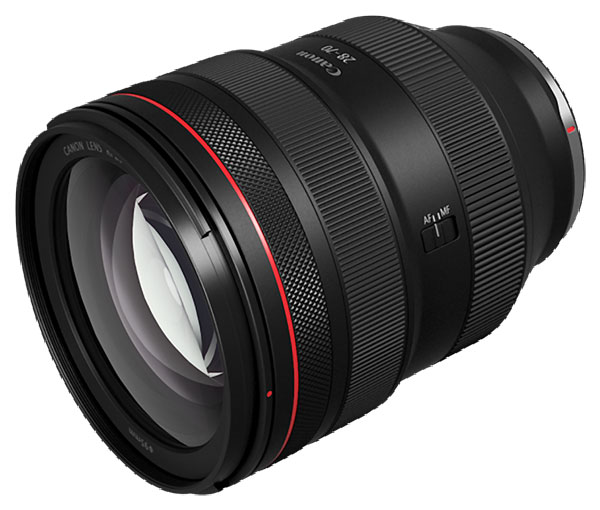
On top of that, in order to ensure the best possible performance, not only in terms of better camera specs but a better user experience as well, we dramatically enhanced data transmission technologies between camera and lens, and it’s not just a difference from 8 pins to 12 pins. [Ed. Note: That's true; part of the new interface is a very high-speed digital communication channel.]
So, we greatly believe in the possibility of mirrorless as long as the mount system is designed very well. And, we designed the EOS R System featuring RF mount for next 30 years which shows our confidence in this new mirrorless system.
I guess you can say we haven’t changed our “camera philosophy”, but we have done all we can to take advantage of what the physical loss of a mirror box can offer in terms of camera design, overall optical innovation and data transmission.
Actually, the first four lenses we announced, the reason why we chose those four lenses was basically to show how well-designed the RF mount system is. We wanted to show actual products which showcased the capability of our system. So intentionally, we chose something like the 28-70mm f/2, which has never been seen in the market, or the 50mm f/1.2 that shows what great image quality can be achieved with the system. So we intentionally chose the lenses in the beginning. And as we mentioned today, we are working on the f/2.8 zoom lenses, also the new-concept lenses coming for the amateurs. So we are working both on the variety of lenses at this point and considering the years coming, to make a great lens system to satisfy the diverse demands.
[Ed. Note: See the discussion immediately below. I don't think it's a matter of disagreeing with their competitors over what's important, but rather relative sizes of market segments and what Canon's current technology lets them do right now.]
DE: So to paraphrase or sum up, it sounds like your camera philosophy is the same as it's always been, but there are a range of specific capabilities that mirrorless brings with it, and it's basically a matter of mapping your philosophy onto those, rather than making any change in the philosophy itself.
We're almost out of time, but one question occurs to me that's not on the list. So the autofocus is very fast and is becoming even faster. But my sense is that the AF system on the 1D X Mark II is more capable of tracking subjects and things. Do you think that's the case, and when do you think that Canon mirrorless will have the same level of ability as the 1D X II?
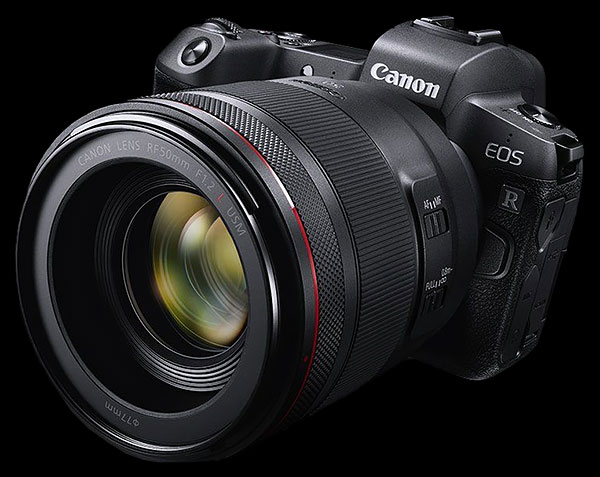
Canon Inc: So at this point, we are unable to share, or rather we don't know what is the exact timeline when we'll be able to catch-up the autofocus abilities to the same level as the 1D X Mark II in the mirrorless systems, but what we can say now is that the high-end pro-level model is already under consideration. And in that project, of course, the autofocus which we are aiming at is of course the same level as the 1D X series.
DE: Ah, that seems notable, even though as you've said before, you can't give any fixed timeline.
[Ed. Note: I think this is interesting. Like every other manufacturer I've ever spoken to, Canon is very careful not to reveal any specific plans or timing. Reading between the lines, though, it seems clear that the pro-level R-series body is actually under development. We don't know when that development started, or what bumps there might be along the way, but I've been told by many in the industry that typical development cycles for advanced cameras run 18 months or so. My personal bet would be for a truly pro-level R-series body with 1D X-level AF performance to arrive late in 2019, but that's just a gut-level guess based on zero actual information. Knowing Canon's cautious nature, though, the very fact that they admitted that it's "under consideration" and that their aim is full 1D X-level AF is encouraging. It's also notable again, that they clearly chose the specific lenses announced at launch to telegraph their long-term vision for the product line as delivering pro-level results.]
DE: Canon had the opportunity to start their full frame mirrorless line with a high-end, pro-level camera but instead opted not to and has not yet addressed that market need. Now that the product has been in the market for a little while, do you think this was the right business decision? Why or why not? Does Canon believe that mirrorless can be a professional solution, or (based on your camera releases) is it reserved for the mid to lower tiers of the market?
Canon Inc: We are considering multiple models within the EOS R series targeting a wide range of customers including pros. We believe our decision to introduce EOS R as a first model was right but we are also aware that a lot of customers are looking forward to seeing a high-end model. We promise we are working on this but it might take some time to introduce.
On the other hand, we recognized that a lot of amateur customers are very interested in stepping up to full-frame through customer feedback. This was a pleasant surprise.
We are developing multiple EOS R cameras now but due to varying levels of preferred features we are likely to launch an amateur model next to let a large group of customers step up and enjoy full-frame image quality. Have no doubt that a professional model is coming, but perhaps it may not be the next model we introduce.
[Ed. Note: Ah - now this is very interesting; what's coming next in the EOS R lineup won't be a higher-end, but rather an entry-level model! (So much for rumors of a many-megapixel R-series replacement for the 5DS/SR anytime soon.) It's also interesting to me that they said they've found very strong demand from their users for lower-cost full-frame mirrorless bodies, from "step-up" users within their existing customer base. This makes sense to me: The EOS 6D Mark II is currently retailing body-only for about $1,600 in the US. That's only $400 less than the EOS R, and still a fairly hefty investment for enthusiasts with modest budgets who want to move up from the crop-frame world, or for people stepping up to the world of "real cameras" from their cell phones. Given the capabilities and price of the EOS R relative to the 6D II, it certainly seems like there's room for Canon to field a more entry-level full-frame mirrorless product. It certainly makes sense that Canon could have a lot of crop-frame users who'd like to upgrade to full-frame capability, but who'd also prefer to go mirrorless vs the conventional SLR route.
I also suspect that Canon needs their underlying sensor technology to advance some, before they can deploy a truly pro-level mirrorless body, with all that implies.
This is significant news, though, in terms of what to expect next from Canon on the mirrorless front.]
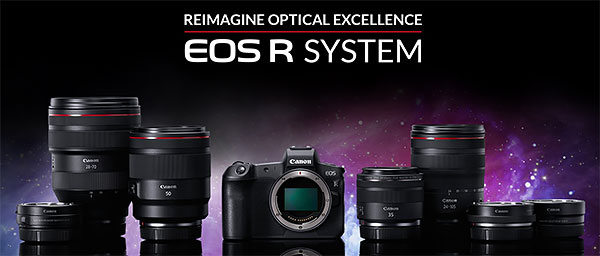
Summary and final analysis
Phew - this has got to be the longest interview-type article I've ever written, but I felt it worth it, given Canon's position in the market, the level of foment and comment that there's been online over the R-series announcement, and the significance of what we learned here.
At the end of the day, here's what I think the key points were, in somewhat random order:
-
Canon says they're equally committed to both DSLR and mirrorless lines, will let the market tell them where to devote their future development dollars. (They made the very valid point that 65-70% of the US market is still for DSLRs, so it'd be crazy for them to just abandon that platform entirely.)
-
A true "pro level" EOS R body is coming, but it'll be a little while yet
-
The next EOS R camera we see will be a lower-cost, "entry-level" model (Canon cited unexpectedly high demand at the lower end of the cost curve)
-
Canon chose the first lenses announced at the system launch to demonstrate what could be done with the new mount, and to telegraph their high-end aspirations
-
Standard f/2.8 zoom lenses will be coming very shortly (eg, 24-70 and 70-200mm)
-
Also on the docket are "new-concept" lenses for the amateur market. (I have no idea what "new-concept" means in this context. My first thought is vacation zooms for full-frame, but that doesn't sound like a very new concept, so I'm stumped.)
-
Canon came up with the idea for mount adapters that did more than just adapt lens mounts, to help overcome the stigma of "lens adapters" (For what it's worth, I think it was a successful strategy)
-
Canon's very aware of the demand for things like uncropped 4K video; stay tuned
-
EOS still cameras' video specs haven't been throttled to protect sales of their Cinema EOS line: Rather, Canon wasn't able to meet the most exacting demands of professional videographers with the same sensor and processor as they were using in their still cameras. So they went to an entirely different sensor and system architecture to meet the (huge) demand they were seeing on the video side.
-
Canon said that they actually have 8K video on the EOS R roadmap, but wouldn't say whether "on the map" meant 2025 or 2019 :-)
-
While we haven't explicitly tested that aspect ourselves yet, the EOS R has the fastest AF speed of any full-frame mirrorless camera* (according to CIPA definitions; see the footnote at the bottom about Canon's claims, based on the CIPA AF-speed testing spec)
-
Canon freely admitted that, while the EOS R's AF system is very fast, it's not capable of the kind of subject tracking that the 1D X II can handle. That's their goal for their future "pro-level" R series body, though.
-
Expect to see the fast Nano USM AF actuator from the RF 24-105 f/4 in a lot of R series lenses going forward. (This is apparently a very fast linear actuator system, perhaps similar to the very fast AF motors in some Sony lenses.)
Reading between the lines, here's where I think Canon is at, how they got there, and where they're going next:
The video market was a huge surprise to everyone, Canon included. They achieved early dominance there with the original 5D Mark II, and worked very hard to capitalize on that, resulting in the Cinema EOS system.
That represented an enormous investment of resources, not only to develop the full line of Cinema lenses and a range of Cinema EOS bodies, but the sensors themselves were a whole separate line from their standard still-camera sensors. They could certainly share a lot of technology between the two lines, but I'm betting that the cycles and resources spent on the Cinema EOS sensors impacted the pace of development on the still-camera side.
Now that the Cinema EOS line is pretty fully mature, the resources spent on developing it are available again for the still camera side, but Canon has a bit of catching up to do. My take is that the initial EOS R (and the coming entry-level model) reflect that position; they need to ratchet up their sensor technology before they can get to the fully pro-level model we talked about.
They're clearly very strongly committed to that goal, though, and their initial lens announcements for the RF mount strongly signal their intent. (And the Nano USM AF actuator technology in the 24-105 f/4 lens is likewise a key technology needed to take them in that direction.)
They have a good bit of catch-up to do on the sensor front, but looking at their recent output, and the aforementioned shifts in demand for their R&D budget, I wouldn't count them out in the slightest. I'm guessing (and it's absolutely nothing more than that) that we'll see a considerably higher-end R series body by the end of this year or early next.
Meanwhile, the EOS R is apparently selling quite well, likely due in no small part to Canon's enormous base, and I expect they'll sell a ton of both it and the entry-level model they mentioned as the next body we're likely to see. As I mentioned above, an entry-level R-series body with an RF-EF mount adapter and a kit of used lenses could deliver a very cost-effective entry to the world of full-frame mirrorless photography. And there are literally millions of current Canon crop-frame shooters, many of whom might be looking to step up to the larger format as well.
All this is not to understate the very stiff competition Canon faces. They've literally never faced competition in the camera market of the scale and quality that they do now. I don't have a crystal ball to see anything beyond that it's going to be an interesting few years in the camera market, and one of the best times in history to be a photographer. I can say, though, that I think Canon is going to continue to be a very strong player in the market, and anyone who counts them out at this point does so at their own peril.
But what do you think? I'll be interested to read your (politely-stated) thoughts in the comments below; I suspect that this article is going to trigger a lot of discussion :-)
* Here's the details on Canon's claim of "fastest full-frame mirrorless AF" for the EOS-R:
Among interchangeable-lens digital mirrorless cameras incorporating 35mm full-frame equivalent image sensors with phase-difference detection AF on the image plane and contrast-detection AF, available in the market as of September 5th, 2018 (Based on Canon's research based on results of AF speed tests in accordance with CIPA guidelines. Results may vary depending on shooting conditions and lens in use. Relies on internal measurement method:
-
Brightness at time of distance measurement: EV12 (regular temperature, ISO 100)
-
Shooting mode: M
-
Lens in use: RF 24-105mm F4 L IS USM, with focal distance of 24mm and live-view mode on (with manual shutter button operation
-
AF mode: Live single-point AF (central) and AF operation: One-shot AF
